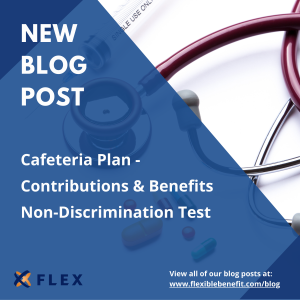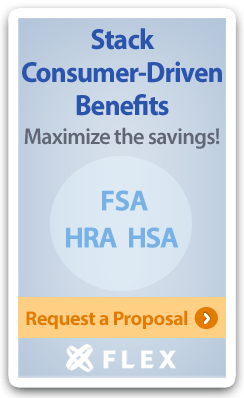Benefits Buzz
Cafeteria Plan - Contributions & Benefits Non-Discrimination Test

Cafeteria Plans, sometimes called Premium-only-Plans (POPs) or Section 125 Plans, allow employees to pay for health and welfare benefits with pre-tax contributions. Because contributions are tax-deductible, the Internal Revenue Service (IRS) has a set of rules in place to ensure highly compensated employees are not receiving or electing benefits more favorably than non-highly compensated employees. This is referred to as the Contributions and Benefits Non-Discrimination Test.
For Cafeteria Plan years starting in 2023, a highly compensated employee is defined as 1) an employee with compensation of $135,000 or more in 2022, 2) any employee who owns more than 5% of the company in the current or preceding year, 3) any employee who is an officer of the company, or 4) any spouse or dependent of the previously mentioned employees. It should be noted that many types of business owners (e.g., sole proprietors, partners in a partnership, more-than-2% owners of an S-Corp) are not eligible to participate in the Cafeteria Plan because they are considered self-employed, and they are treated differently for tax purposes.
To satisfy the Contributions and Benefits Test, employers should ensure the following requirements are met:
1) The same benefits are offered to highly compensated and non-highly compensated employees.
2) The same employer contribution schedules are made to highly compensated and non-highly compensated employees. Contributions can vary by coverage tier (e.g., single vs. family), age when there are adjusted community rates, or employers may use matching contributions provided the matching contribution is not more favorable to highly compensated employees.
3) The Cafeteria Plan must not discriminate in favor of highly compensated employees in operation. For example, the Cafeteria Plan should have the same enrollment procedures and claim processing procedures for highly compensated and non-highly compensated employees.
4) Highly compensated employees cannot elect benefits disproportionately in comparison to non-highly compensated employees. As an example, assume there are five highly compensated employees who each earn $200,000 per year (for a total combined compensation of $1,000,000 per year). Each highly compensated employee elects $10,000 in total benefits, including employer and employee contributions (for a combined total election of $50,000). Highly compensated employees are considered to have elected benefits at a rate of 5% of their income ($50,000 / $1,000,000 = 5%).
If there are ten non-highly compensated employees who each earn $50,000 per year (for a total combined compensation of $500,000), non-highly compensated employees must elect at least $25,000 in total benefits ($500,000 x 5% = $25,000), including employer and employee contributions, to have an election rate of their income similar to or greater than that of highly compensated employees. This would be an average election of $2,500 in total benefits for each of the ten non-highly compensated employees.
ay 1, 2023
When any of the Contributions and Benefits Non-Discrimination Test requirements are failed, highly compensated employees lose the tax favorable treatment of the Cafeteria Plan. In other words, contributions made by highly compensated employees should be done on a post-tax basis. There is no consequence to non-highly compensated employees, and they can continue to make contributions with pre-tax dollars.
Cafeteria Plans also have two other Non-Discrimination Tests – the Eligibility Test and the Key Employee Concentration Test. Those tests are not addressed in this article but should not be overlooked.

